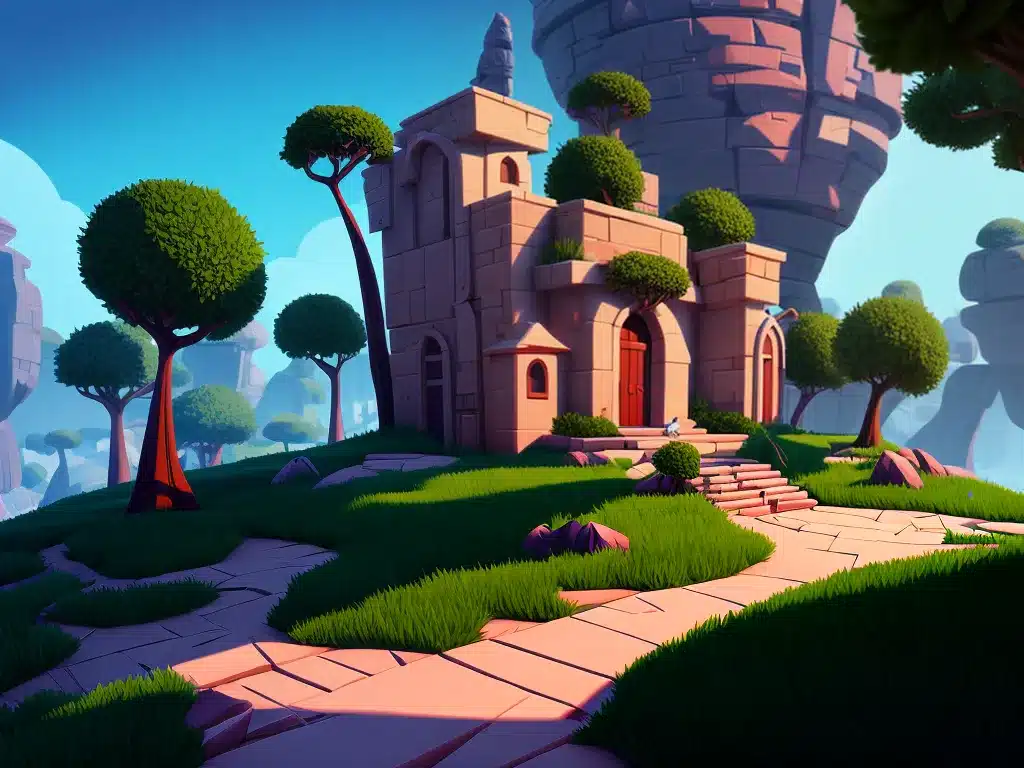Introduction
Environment design is a crucial part of creating engaging and believable worlds for stylized animation. As the environment artist, my job is to visualize and construct spaces that support the storytelling and strengthen the unique look and feel of the project. This involves making thoughtful creative choices about shape language, color, lighting, and more. In this article, I will provide an in-depth look at the art of environment design for stylized animation.
Defining the Project’s Visual Style
Before I can start designing environments, it is essential to have a solid understanding of the visual style the project is aiming for. This starts with studying the concept art and discussing the art direction with the art director. Some key things for me to understand are:
- The level of stylization – is it very cartoony or closer to realistic?
- The shape language and proportions used for characters and props.
- The color palette – saturation, hue choices, etc.
- The types of textures and materials planned for the world.
- Any distinctive visual motifs that will be repeated.
These elements will inform the choices I make when designing environments for the project. It is critical that my work complements the established look and helps immerse viewers in the story world.
Conceptualizing Environmental Spaces
Once I understand the overall visual style, I can start ideating environmental spaces. This involves brainstorming and creating rough concept sketches to explore possibilities.
Some key things I focus on during the conceptual stage:
- The story – How can the environment enhance the narrative or create the right mood?
- Character needs – What spaces will the characters inhabit and how can the environment serve their functions in the story?
- Architecture – What architectural styles and shapes fit the world? Do buildings need entrances and usable rooms or just interesting facades?
- Layout – How can I use perspective, scale, open space, etc to lead the viewer’s eye?
- Function – Will characters need to walk around or are environments just decorative backdrops?
Creating quick sketch concepts allows me to get feedback early and iterate on my environment designs.
Constructing Final Environment Assets
With the concept approved, I can start constructing the final environment assets. This is an iterative process alternating between big picture design and refinement of details.
Some of the steps I typically go through when producing a final environment asset:
- Block out rough forms with simple geometric shapes
- Refine shapes, scale, and perspective
- Add surface detail and texturing
- Develop an efficient modular set of parts
- Add props, set dressing, and accent elements
- Create a library of variant pieces for re-use
- Render simplified lighting and iterate on look and color
- Optimize poly count and textures as needed
Matching the Lighting Approach
Lighting can make or break how cohesive a stylized environment feels. It is vital that my approach to lighting matches the established look for the animation style.
Some lighting considerations:
- Using 2D or 3D lighting techniques?
- What is the primary light source and direction?
- Should lighting be softened and diffuse or bold and dramatic?
- What mix of warm, neutral, and cool tones enhances the color palette?
- Are there opportunities for accent colors from neon signs or other light sources?
- How can lighting help compose the shot and establish depth?
Studying the lighting in the concept art provides excellent reference for me. Matching the tone and style of lighting makes my environments feel like they truly belong in the established world.
Conclusion
Creating compelling stylized environments requires understanding the project’s visual style, conceptualizing functional spaces, iteratively constructing assets, and lighting them appropriately. By keeping the needs of the story and characters in mind, I can design environments that feel integral to the unique world depicted in the animation. With the right artistic choices, I can transport viewers to amazing stylized places.













